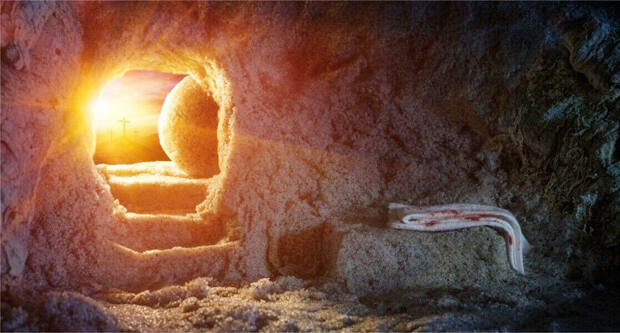An Easter without going to church

The pandemic has laid an egg on our worship. The Centers for Disease Control and Prevention issued a formal recommendation that public gatherings be postponed or canceled for the next eight weeks. For organizations that serve high-risk populations, the threshold is 10 people, though most churches aren’t even doing that. Easter worship (April 12) as we’ve known it is doomed. Early on, many pastors probably presumed that preaching to cameras rather than congregations wasn’t going to encompass a whole season.
Events are moving quickly from bad to worse. No doubt pastors worry that two months of canceled worship services will provide the proverbial straw to break the camel’s back of congregational decline. For years we preachers told our congregations how “coming to church doesn’t make you a Christian” (usually followed by the tread-bare analogy about how being in a garage doesn’t make you a car). We never really meant to be taken seriously. Fewer and fewer adults already report attending church in America. What’s going to happen when this last remnant gets used to spending Sundays at home? Like everything in this anxious moment, it’s too soon to tell.
READ: ‘Church at the Drive-In’ idea is revived
The first Easter found the most faithful huddled away from their congregations, hiding out with a different fear. Instead of a pandemic, the disciples were afraid of the religious and political authorities who’d crucified Jesus and were likely coming after them too. Perhaps they also feared Jesus. After all, they’d sworn never to deny or disown him, but when everything went south, they’d scrambled and fled, leaving a small group of women to keep the faith afloat. And now Jesus was loose! The disciples’ socially-distant hideout proved a bad barrier. Jesus appeared in their midst (John 20:19–21) to forgive and to bless and, a few weeks hence, to empower with his very Spirit.
It is this same Holy Spirit who has empowered Christians to serve and to love through every crisis — from pandemics to natural disasters and world wars. Researcher Lyman Stone reminds us how Christians historically sacrificed for others during epidemics and plagues. Christians built the first hospitals where caring for the sick could happen safely. Their courageous conviction to love and care for the least and the poor bore witness to the Spirit’s power. The result was more an expanding than diminishing church and the spread of the gospel.
Controversially, Stone goes on to advocate for congregational worship for the sake of community. To be the body of Christ on earth requires we meet together as physical bodies. Stone adds that seeing one another in gathered space is not only a matter of supporting one another but a way to keep tabs on each other’s well-being.
However, even if we do practice stringent hygiene and social distancing, coming together as congregations in the face of this pandemic actually mars our witness. Rather than looking courageous and faithful, we come off looking callous and even foolish, not unlike the snake handlers who insisted on playing with poison as a proof of true faith. Better the recent encouragement from Wheaton College’s Esau McCaulley: “The church’s absence, its literal emptying, can function as a symbol of its trust in God’s ability to meet us regardless of the location. The church remains the church whether gathered or scattered.”
The church remains the church online, too. During a season of illness when I couldn’t attend church in person, I benefited from what theologian Deanna Thompson calls “the virtual body of Christ.” Relying on digital church during her own deadly illness, Thompson writes, “I received a prayer shawl from my local church community on the day I was diagnosed, [but] through the spreading of my story digitally, five more prayer shawls arrived in the mail from church communities across the country. It’s possible to read this as a (most wonderful) digital extension of the local church.”
In northeast Minneapolis at the beginning of the pandemic, pastor Stephanie O’Brien reported that her congregation designed a flyer to distribute throughout the neighborhood offering childcare help, transportation, grocery shopping, or anything else to love their neighbors. Though not coming together as a large group to worship, they can, assisted by social media and virtual reality, provide physical hands and feet to people in critical need. This is happening all across the country.
Empowered by the Holy Spirit, we might expect other unexpected blessings during this pandemonious Lent: extra alms to donate to the poor, time to meditate and to pray, and a growing concern for the needs of the world and even the planet, the imposition of self-denial and silence.
Turn to the Easter story proper and you find remarkable silence, the greatest in all Scripture. Nowhere does the Bible offer a description of the Resurrection itself, no language telling us exactly how it happened, no speculation as to what went on in the tomb that first Easter morning.
Instead, the risen Jesus simply and shockingly shows up to his disciples huddled in fear. In time, this merry band of uneducated fishermen, outcasts, and losers upended the Empire. Salvation arrived for all believing humanity. Read to the end of the New Testament, and this same gospel redeems the entire cosmos. All of this emanates out of a glorious emptiness we celebrate Easter morning, whether gathered or scattered.
–Daniel Harrell is Christianity Today’s editor in chief







